Dips AlternativesIf you're here, we're guessing you're looking for an exercise to replace dips. Isn't that right? We can assure you that you have arrived at the correct website. If you find it difficult to perform regular parallel bar dips or if your gym lacks a dip station, this post is for you. Dips have always been a foundational exercise in any weight training regimen. As a compound movement, they primarily target your chest, triceps, and anterior deltoids. Dips, according to some, are the upper body equivalent of squats. As a result, by ignoring such an effective movement entirely, you will be leaving a large portion of your potential gains on the table. To ensure you get the most out of your workouts, we've put together a list of 10 effective dip alternatives. You can incorporate these exercises into your workout routine to improve your upper body pushing strength and overall muscle gains. Let's get this party started. Dips are an excellent way to strengthen your triceps and pecs. However, if you find it difficult to perform the dips, the exercises to replace dips mentioned in this post will serve you well. Even though most of them will not replicate the exact movement pattern of a dip, they will target the same muscle groups that a dip would. 1. Diamond Push-Ups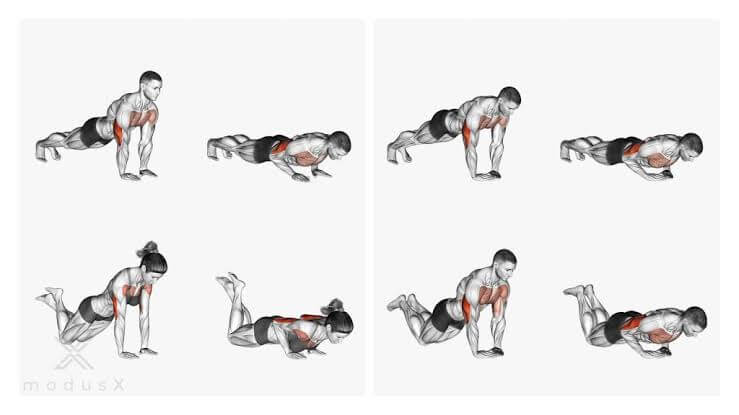
If your gym does not have a dip station and you are looking for a bodyweight exercise to target your triceps and inner pecs, diamond push-ups will do the trick. Diamond push-ups keep your body in a position that maximizes the effect of this exercise on your triceps. As a result, it is an excellent alternative to tricep dips. Because this movement only requires your body weight as resistance, you can do it almost anywhere. Steps to follow:
2. Weighted Bench Dips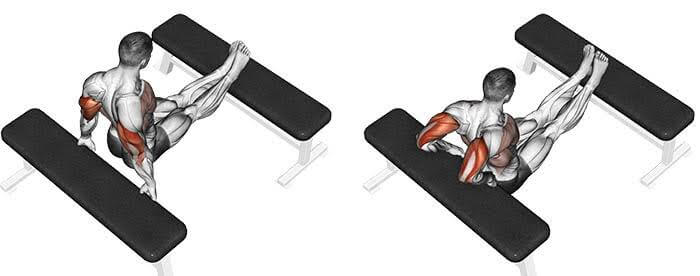
Weighted bench dips are a great pushing exercise that can help you gain triceps size. They are an excellent replacement for tricep dips. Weighted bench dips work your triceps in the same range of motion that a dip on the parallel bars does. The resistance in this exercise comes from both your body weight and free weights on your lap. All of this makes this exercise an excellent mass-building exercise. While performing weighted bench dips, make sure not to stretch your shoulders. It may lead to shoulder impingement. Steps to Follow:
3. Dumbbell Push-Ups
If you can't feel your pecs while doing standard push-ups, try dumbbell push-ups. This manoeuvre is not as simple as it appears. You'll need to keep your body balanced while doing it. If you're looking for a bodyweight movement that can serve as a dip replacement exercise, and dumbbell pushups are a good choice. This exercise promotes upper body strength and muscle gains in addition to stabilising your shoulders and triceps. Steps to Follow:
4. Neutral Grip Dumbbell Bench Press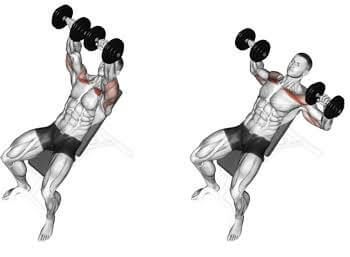
The movement pattern of the neutral grip dumbbell bench press is similar to that of dumbbell pushups. The only difference is that the former is performed on a bench, whereas the latter can be performed almost anywhere using a pair of dumbbells. The neutral grip dumbbell bench press, like the close grip bench press, reduces stress on your shoulders while effectively training your triceps and inner chest fibers. Steps to Follow:
5. Standing Decline Cable Press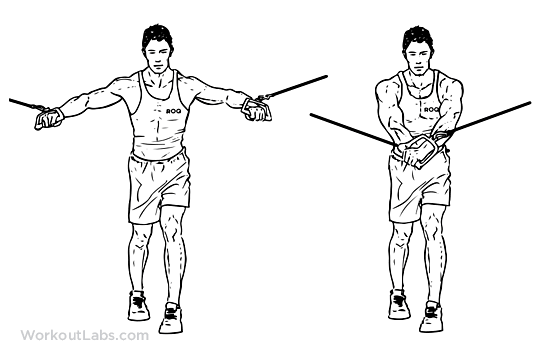
When you use cables to perform an exercise, you can train the target muscles with constant tension. A declining cable press is no exception in this regard. You can train your pecs with a full range of motion by using a standing decline cable press. You couldn't do it while doing a standard barbell or dumbbell bench press. This movement can also be used to train your pecs and triceps with heavyweights. As a result, the standing decline cable press is a viable weighted dips alternative. Steps to Follow:
6. Pec Deck Machine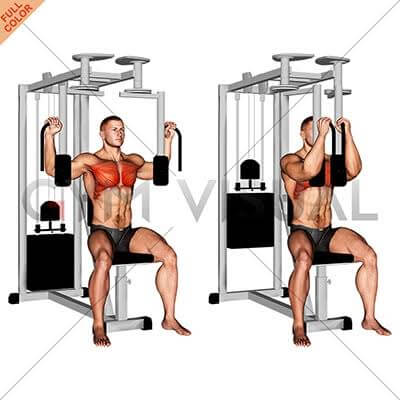
When you use a pec deck machine to train your chest muscles, it not only targets your chest but also helps you train other muscle groups that support your chest. A pec deck machine works out your pec major, pec minor, serratus anterior, and anterior deltoids. The pec deck machine imitates the movement pattern of a dumbbell fly. It allows you to maintain constant stress on your pecs, making it an excellent exercise for training your chest muscles. Steps to Follow:
7. Hex Dumbbell Press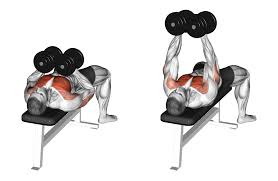
You keep your wrists in a neutral position when performing a hex dumbbell press. This relieves the strain on your wrists and shoulders as you perform this movement. Hex press is a dip replacement exercise that effectively trains your triceps and inner chest. Even if you do this exercise with lighter weights, you will feel significant stimulation in your chest fibers. Steps to Follow:
8. Cable Crossovers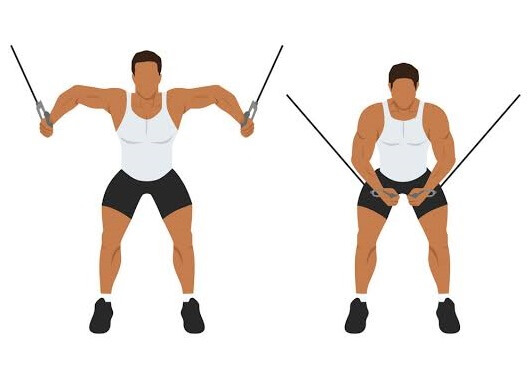
Cable crossovers are an excellent exercise to perform at the end of a chest training session. This exercise trains your pecs throughout their entire range of motion and allows you to maximize peak contraction in the pecs. Cable crossovers allow you to hit your pec fibres from a variety of angles. High-to-low cable crossovers target your lower chest muscles in the same way that parallel bar dips do. When performing cable crossovers, pull the cables with your pecs. This movement should involve little to no involvement of your shoulder joints. Steps to Follow:
9. Skull Crushers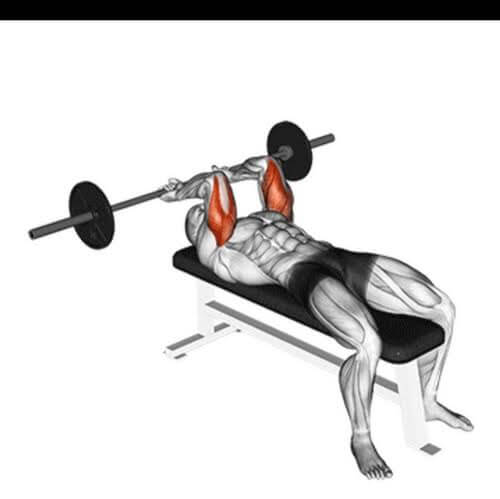
Skull crushers are frequently regarded as the apex of all tricep exercises. Skull crushers, when performed correctly, contribute to triceps strength and hypertrophy gains. If your triceps lack the foundational strength needed to perform parallel bar dips and you're willing to work on strengthening them, skull crushers can help. This exercise can be used in place of tricep dips in your workout routine. Steps to Follow:
10. Tricep Kickbacks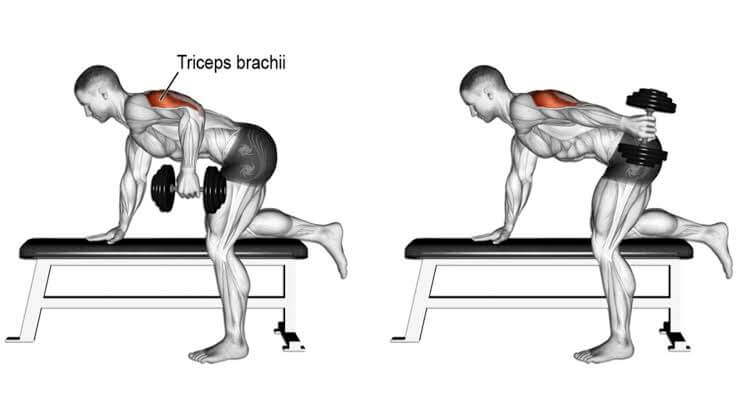
Tricep kickbacks are one of the most popular tricep isolation exercises. Tricep kickbacks are an excellent way to increase the peak contraction of your triceps. Tricep kickbacks are a tricep extension exercise. They put them through their entire range of motion. If you want to carve horseshoe-shaped triceps, tricep kickbacks will suffice. Steps to Follow:
Next TopicTwitter Alternatives
|
 For Videos Join Our Youtube Channel: Join Now
For Videos Join Our Youtube Channel: Join Now
Feedback
- Send your Feedback to [email protected]
Help Others, Please Share










